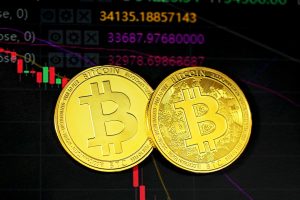Forex, also known as foreign exchange, is a decentralized global market where currencies are bought and sold. It is the largest and most liquid market in the world, with a daily trading volume of over $5 trillion. Forex trading involves buying one currency and selling another at the same time, with the aim of making a profit from the price difference.
Forex trading is facilitated by a network of financial institutions, such as banks, brokers, and dealers, who act as intermediaries between buyers and sellers. These institutions provide traders with access to the market through trading platforms, which allow them to buy and sell currencies in real-time. All transactions in the forex market are based on the exchange rate between two currencies.
Exchange rates are determined by a number of factors, including economic and political events, interest rates, and market sentiment. These factors can cause currency prices to fluctuate rapidly, creating opportunities for traders to make profits. Forex traders use a range of strategies to try and predict currency movements and take advantage of market volatility.
One of the key benefits of forex trading is its accessibility. Anyone with an internet connection and a few hundred dollars can start trading forex. The market is open 24 hours a day, 5 days a week, allowing traders to participate in trading activities from anywhere in the world. Forex trading is also highly leveraged, which means that traders can control large positions with relatively small amounts of capital. This can result in significant returns on investment, but it also carries a high degree of risk.
To succeed in forex trading, traders need to have a deep understanding of the market, as well as the ability to manage risk effectively. They must also be able to analyze market trends and make informed decisions based on economic data and other market indicators. Many forex traders use technical analysis tools, such as charts and graphs, to identify patterns in price movements and make trading decisions based on these patterns.
There are several different types of forex trading strategies that traders can use, including scalping, day trading, swing trading, and position trading. Each strategy has its own set of advantages and disadvantages, and traders need to choose the one that best suits their trading style and risk tolerance.
In addition to individual traders, large financial institutions, such as banks and hedge funds, are also active participants in the forex market. These institutions use forex trading to manage their currency exposures and to generate profits for their clients. They also play a key role in providing liquidity to the market, which helps to ensure that prices remain stable and that trades can be executed quickly and efficiently.
In conclusion, forex trading is a complex and dynamic market that offers opportunities for traders to make profits by buying and selling currencies. It is the largest and most liquid market in the world, with a daily trading volume of over $5 trillion. Forex trading is accessible to anyone with an internet connection and a few hundred dollars, but it also carries a high degree of risk. To succeed in forex trading, traders need to have a deep understanding of the market, as well as the ability to manage risk effectively.





